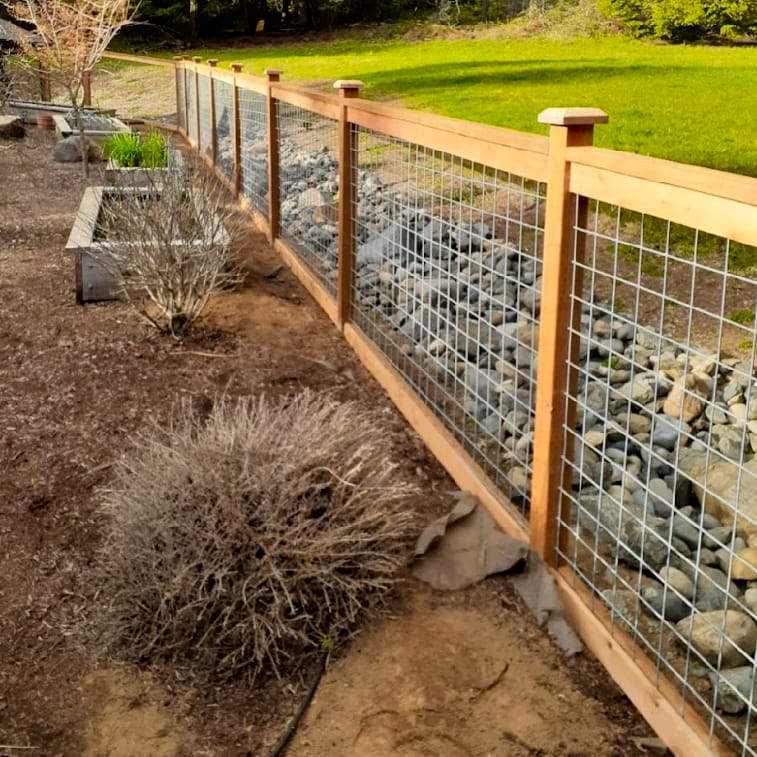All Categories
Featured

Whether it's solid winds, rainfall, snow, or extreme warmth, weather condition conditions can progressively damage your fence, leading to pricey repairs or replacement. There are a number of steps you can take to secure your fence from weather-related damage and expand its life-span.
- Select the Right Material. The kind of material your fence is made from plays a considerable duty in just how well it will hold up against weather. Some materials are naturally extra immune to damage than others. :
Wooden Fencings: While timeless and lovely, timber can be susceptible to moisture, rot, and insects. Pressure-treated timber or cedar can supply better resistance to these issues. Vinyl Fencings: Vinyl is highly immune to dampness, rot, and bugs. It also stands up well to extreme sunlight and heavy rain. Steel Fencings: Wrought iron or light weight aluminum fences are resilient and can stand up to a selection of weather conditions. They can, nonetheless, endure from corrosion over time, especially if not appropriately coated. Composite Fences: Made from a combination of timber fibers and plastic, composite fences are extra immune to weather-related damages compared to standard timber fencings. Selecting the ideal material for your area's climate is the initial step in shielding your fencing from climate damages.
- Seal or Stain Wooden Fences. Wooden fencings are especially prone to damage from wetness, UV rays, and temperature changes. One of one of the most efficient means to safeguard your timber fencing is by using a safety sealant or stain. These items assist:
Avoid Water Damages: Sealants produce a water-resistant obstacle, stopping moisture from permeating right into the wood and triggering mold, rot, or mildew. Secure Against UV Damage: An excellent tarnish or sealant will certainly additionally obstruct damaging UV rays from the sun, which can trigger timber to dry, split, and blemish with time. Maintain the Fencing's Appearance: Normal discoloration aids maintain the all-natural appeal of the wood and expands its life-span. It's advised to reapply the discolor or sealant every 1-- 2 years to maintain your surround excellent problem.
- Mount an Obstacle for Wind Security. Solid winds can trigger considerable damages to your fencing, especially if it is high or weak. Wind can flex or break wooden panels, loosen fencing posts, and even cause the entire fencing to collapse. Installing a windbreak-- such as planting hedges, bushes, or installing a mesh obstacle-- can help secure your fencing from high winds.
Additionally, you can strengthen the blog posts with concrete or metal braces to give additional stability and prevent leaning or changing.
- Trim Overhanging Branches. Falling branches can break panels or damage the fencing posts, leading to pricey repairs. Keeping the branches cut back decreases the danger of branches breaking off and creating damages to the fence.
- Regular Inspections and Upkeep. Doing routine maintenance and assessments is essential to capturing potential problems before they intensify. After a hefty tornado, examine your fence for any kind of indicators of damages, such as loosened panels, leaning posts, or busted areas. Caring for little concerns prior to they end up being larger ones can assist extend the life of your fence.
Furthermore, cleaning your fence periodically to remove particles, dust, or mold and mildew can help preserve its appearance and honesty. For wooden fencings, delicately stress clean the surface area to get rid of built-up gunk, and for plastic fencings, utilize a light detergent to clean up any type of spots.

- Make Sure Proper Drainage. Water damage is just one of one of the most common weather-related problems that influence fencings. Poor drain can bring about standing water around your fence posts, which can create the articles to rot or weaken in time. To avoid this, make certain the ground around your fence inclines away from the blog posts. You may additionally wish to install water drainage solutions such as French drains or crushed rock at the base of the blog posts to stop water from merging.
- Use a Safety Covering to Steel Fences. Metal fencings, such as those constructed from iron or steel, are very long lasting but can be vulnerable to corrosion if not effectively maintained. Using a protective finish or paint that is specifically made for metal can help protect against rust and deterioration. Make sure to examine the fencing occasionally for any type of indications of rust, and address it right away by sanding and repainting the impacted areas.

Verdict. Your fencing is an important financial investment, and protecting it from weather-related damage will assist make sure that it continues to serve its function for many years to find. By picking the best materials, consistently maintaining your fencing, and taking actions to safeguard it from the aspects, you can lessen weather-related damage and extend its lifespan. Whether you're dealing with solid winds, heavy rain, or the severe sun, these simple actions can go a long way in maintaining the problem and appearance of your fence, conserving you money and time over time.
Latest Posts
Get Huge Savings with Montclare Auto Repair Discounts - Act Fast!
Published Apr 19, 25
2 min read
Boost Your Occasion with Costs Audio-Visual Solutions
Published Apr 19, 25
1 min read
Cold Stone Creamery: A Delicious Emphasize at FunCity Resort
Published Apr 19, 25
1 min read